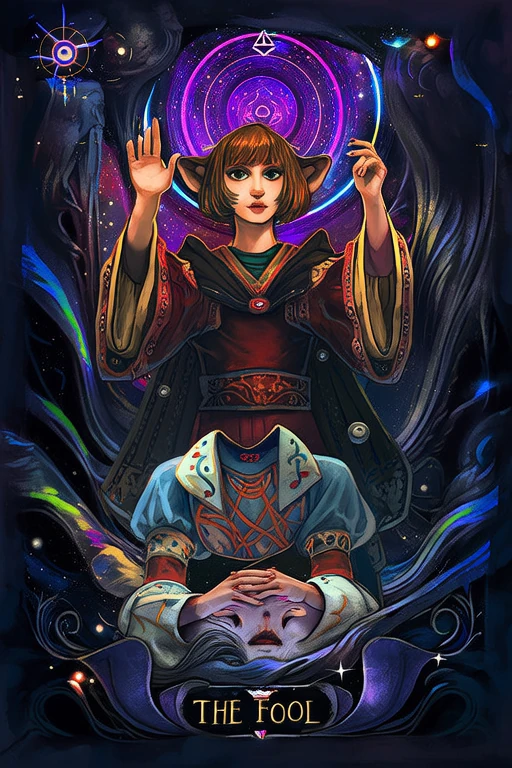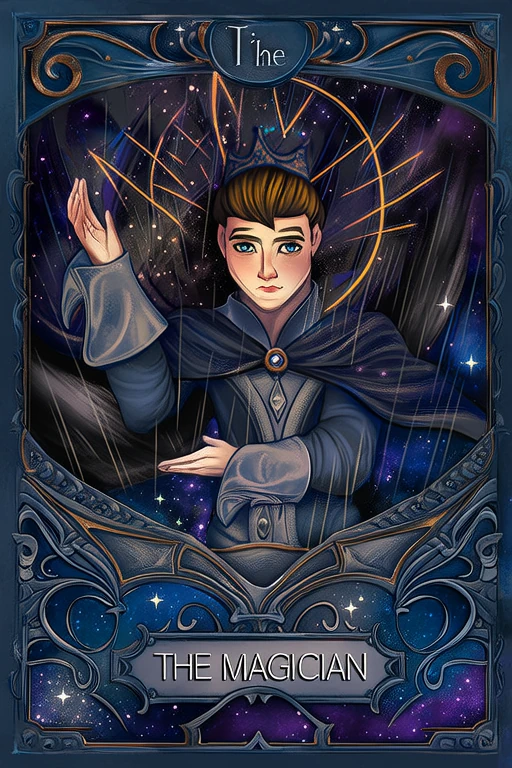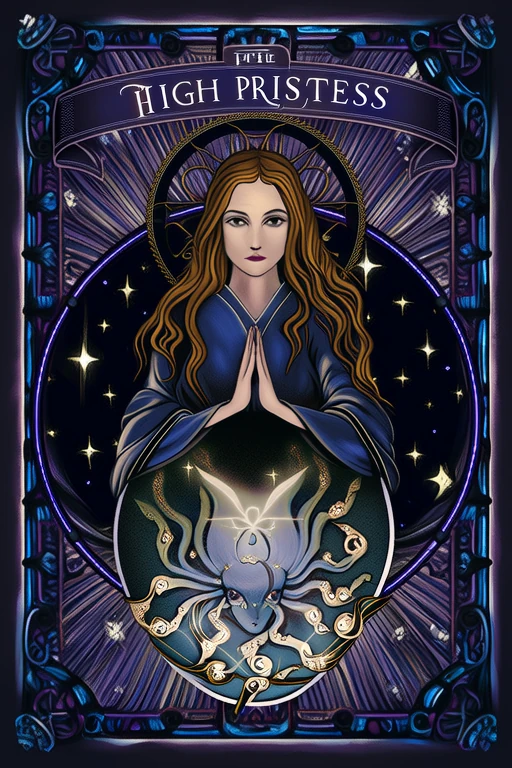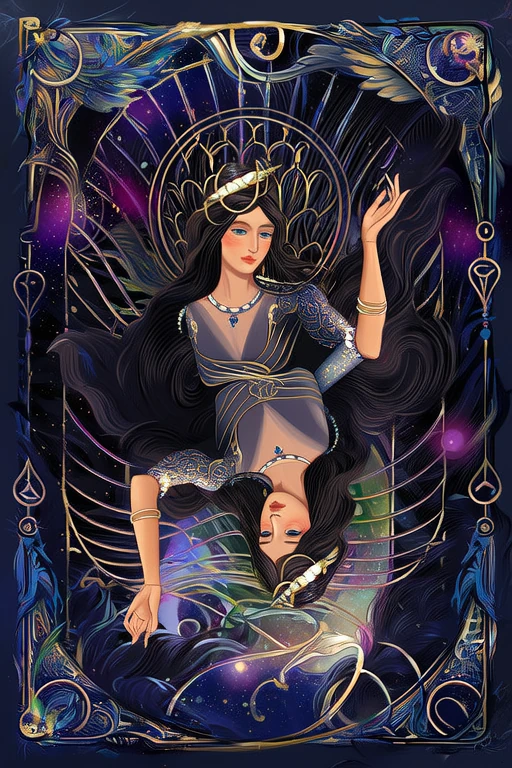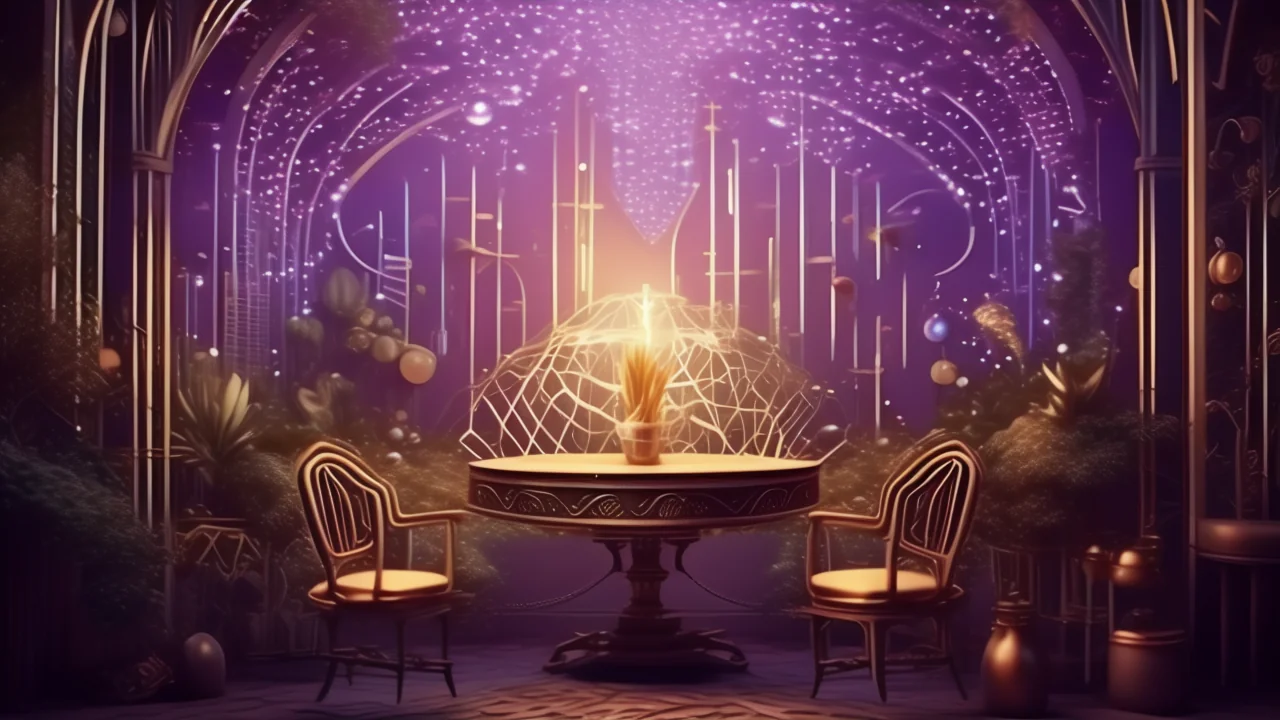
The Devil
Discover the deep meaning of The Devil with our free AI-powered tarot interpretation. Get instant, accurate readings based on advanced tarot knowledge.
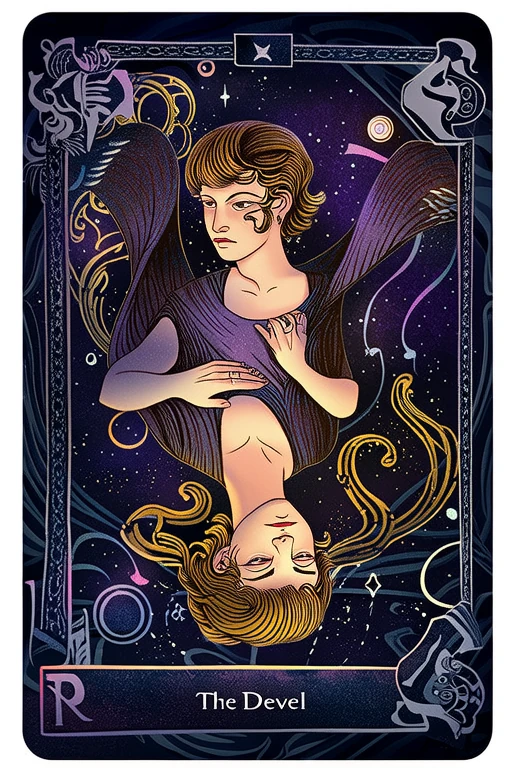
Keywords
Upright Meaning
Shadow self, attachment, addiction, restriction, sexuality
Reversed Meaning
Releasing limiting beliefs, exploring dark thoughts, detachment
Full Interpretation
The Devil represents our shadow side, attachments, and the things that bind us.
In-Depth Analysis
📜 Historical Background
The Devil card, numbered XV in the Major Arcana of the tarot, has long been one of the most misunderstood and evocative cards in the deck. Its origins trace back to the early 15th century, when tarot cards were first used in Europe—not for divination, but as playing cards in games like Tarocchi in Italy and Tarot in France. The earliest known depiction of The Devil appears in the Visconti-Sforza tarot deck, a 15th-century hand-painted set commissioned for the ruling families of Milan. In this deck, The Devil is portrayed as a grotesque, horned figure with bat-like wings, often chained, symbolizing the physical and spiritual temptations that bind humanity.
During the Renaissance, the imagery of The Devil was heavily influenced by Christian iconography, where the devil was depicted as a monstrous, horned creature, often with cloven hooves and a tail—symbolizing sin, temptation, and the fall from grace. However, the card's symbolism is not purely rooted in Christian theology. It also draws from older mythologies, including ancient Greco-Roman deities like Pan, the god of nature and fertility, and even earlier pagan traditions that revered horned gods as symbols of primal energy and raw instinct.
In the 18th and 19th centuries, as tarot evolved from a game into a tool for occult and esoteric practices, The Devil card took on deeper symbolic meaning. The Hermetic Order of the Golden Dawn, a prominent mystical society, integrated The Devil with astrological and kabbalistic systems, associating it with the planet Saturn and the sephirah Binah on the Tree of Life. This association emphasized themes of limitation, bondage, and materialism.
Arthur Edward Waite and Pamela Colman Smith’s Rider-Waite-Smith tarot deck (1909) revolutionized the visual language of The Devil. In this now-iconic version, the card depicts a horned, winged figure with a human face, sitting on a throne between a man and a woman, both chained. The chains are loosely around their necks, suggesting that the bondage is self-imposed. This imagery reflects the idea that The Devil represents addiction, materialism, and unhealthy attachments—not necessarily evil, but rather the consequences of losing control to base desires.
Throughout history, The Devil has been interpreted differently across cultures. In some traditions, it is seen as a literal embodiment of evil, while in others, it represents the shadow self, the unconscious drives, or the darker aspects of human nature that must be acknowledged and integrated. In modern tarot, The Devil is often viewed as a mirror to our deepest compulsions and a call to reclaim personal power by breaking free from destructive patterns. This evolution in meaning underscores the card’s enduring relevance and the shifting perceptions of human vice and virtue across time.
Symbolism & Imagery
The Devil card is rich in symbolic imagery, each element carefully designed to convey layers of meaning. At its core, the card represents the darker aspects of human nature—addiction, obsession, materialism, and the loss of personal freedom. In most traditional decks, such as the Rider-Waite-Smith, The Devil is shown as a horned, winged figure seated on a throne, often with a human face, symbolizing the duality of divine and animalistic nature within every person. Flanking The Devil are a man and a woman, bound by chains that loop around their necks and waists, indicating a form of bondage that is both physical and psychological.
The chains themselves are crucial to the card’s meaning. Though they appear binding, they are often loose or unfastened, suggesting that the individuals are prisoners of their own making—trapped not by external forces, but by internal compulsions and desires. The torch held by The Devil symbolizes passion and the destructive potential of unchecked desire, while the inverted pentagram on his forehead represents the corruption of spiritual values and the descent into materialism.
Colors also play a significant role. Dark reds and blacks dominate many versions of the card, symbolizing sensuality, power, and the shadow side of the psyche. Gold accents may represent the allure of wealth and material success, while earthy tones reflect the grounding nature of physical desires and the earthly plane.
Numerologically, The Devil is the fifteenth card in the Major Arcana (XV), and the number 15 reduces to 6 (1+5=6), which in numerology is associated with responsibility, balance, and the home. This suggests that The Devil’s influence often relates to personal choices and their impact on relationships and domestic life.
Interpretatively, The Devil card can vary widely depending on the cultural lens. In Western esoteric traditions, it is often linked with temptation and moral decay. In contrast, some Eastern interpretations view it as a representation of karmic entanglements or the consequences of past actions. Jungian psychology sees The Devil as an archetype of the Shadow, the unconscious part of the psyche that houses repressed desires and fears.
When The Devil appears upright in a reading, it typically signifies addiction, dependency, or being trapped in harmful patterns. Reversed, it may indicate a release from bondage, self-awareness, or the beginning of liberation from destructive habits. The Devil also connects strongly with The Tower and The Moon, as all three cards deal with illusions, hidden truths, and the need for awakening.
Ultimately, The Devil is not a card of evil but of awareness. It challenges the querent to confront what binds them and to reclaim their autonomy by facing the darker aspects of their nature with honesty and courage.
Psychological Insights
From a psychological perspective, The Devil card resonates deeply with the theories of Carl Jung, particularly his concept of the Shadow archetype. The Shadow represents the unconscious part of the psyche that houses repressed desires, fears, and impulses—those aspects of ourselves we find unacceptable or uncomfortable. The Devil embodies this Shadow, calling attention to the parts of our nature that we deny or suppress. Encountering The Devil in a tarot reading is often a signal to confront these hidden aspects, integrate them, and thereby achieve a more balanced and whole sense of self.
In modern life, The Devil serves as a powerful mirror for personal habits and behaviors that may be holding an individual back. Whether it’s addiction, overindulgence, toxic relationships, or unhealthy attachments to material possessions or social status, The Devil encourages self-reflection and accountability. It does not condemn but rather invites the querent to recognize where they may be losing control or compromising their values for short-term gain.
Decision-making under The Devil’s influence often involves a reckoning with temptation and consequences. It challenges the querent to ask: What am I clinging to that no longer serves me? Am I making choices out of fear, desire, or compulsion? These questions can be especially relevant in career, relationships, and personal growth contexts, where short-term gratification may conflict with long-term fulfillment.
Therapeutically, The Devil is a valuable tool in counseling and self-help practices. It can help clients identify patterns of self-sabotage, dependency, or emotional bondage. Counselors and coaches may use this card to explore themes of codependency, low self-worth, or the struggle for autonomy. It encourages individuals to reclaim their personal power by acknowledging and addressing the root causes of their compulsions.
Spiritually, The Devil is often misunderstood but essential in shadow work—a modern spiritual practice that involves exploring and integrating the darker aspects of the self. Rather than rejecting or fearing these aspects, shadow work encourages embracing them as part of the human experience. The Devil card is a reminder that true spiritual growth comes not from denying our flaws but from understanding and transforming them.
Ultimately, The Devil is not a card of doom but of awakening. It invites introspection, challenges illusions, and calls for liberation from self-imposed chains. By facing The Devil, individuals can begin the process of healing, growth, and transformation, leading to a more authentic and empowered life.
Correspondences
The Devil card is deeply connected to various esoteric and metaphysical systems, offering a rich tapestry of correspondences that enhance its interpretive power. Astrologically, The Devil is linked to the sign of Capricorn and the planet Saturn. Capricorn, an earth sign ruled by Saturn, embodies ambition, discipline, and structure, but also materialism and rigidity—themes that align closely with The Devil’s associations with bondage, ambition, and worldly desires. Saturn’s influence adds a layer of restriction and limitation, reinforcing the card’s message of being trapped by external or internal forces.
Gemstones and crystals associated with The Devil include obsidian, black tourmaline, and red jasper. Obsidian is a protective stone that helps reveal hidden truths and facilitates shadow work. Black tourmaline is known for grounding and clearing negative energy, making it ideal for those dealing with addictive behaviors or toxic influences. Red jasper, linked to primal energy and vitality, can help channel The Devil’s raw power in a constructive way.
Herbs and essential oils tied to The Devil include patchouli, myrrh, and dragon’s blood resin. Patchouli promotes grounding and sensuality, while myrrh is used in purification and spiritual protection. Dragon’s blood is a powerful resin associated with transformation, strength, and banishing negativity, making it ideal for rituals involving The Devil’s energy.
Elementally, The Devil is associated with Earth, symbolizing the material world, physical desires, and tangible attachments. Seasonally, it resonates with late autumn to early winter—the time of harvest and preparation, but also of decay and letting go. This seasonal correspondence reflects the card’s themes of reaping what one has sown and confronting the consequences of past actions.
In terms of chakras, The Devil is primarily linked to the root chakra, which governs survival, grounding, and material needs. When blocked, this chakra can lead to greed, fear, or overindulgence—issues often reflected in The Devil’s presence. Balancing this chakra can help individuals reclaim their power and release unhealthy attachments.
Numerologically, The Devil corresponds to the number 15, which reduces to 6 (1+5=6), a number associated with responsibility, love, and harmony. This suggests that The Devil’s influence often relates to how one balances personal freedom with responsibilities, particularly in relationships and domestic life.
❓ Frequently Asked Questions
**What does The Devil card mean in a tarot reading?**
The Devil card typically represents addiction, materialism, unhealthy attachments, or being trapped by one’s own desires. It is not a literal depiction of evil but rather a symbolic call to examine where you may be losing control or compromising your values for short-term gratification.
**Is The Devil always negative?**
No, The Devil is not inherently evil. It reflects the darker aspects of human nature—temptation, obsession, and dependency—but also serves as a prompt for self-awareness and liberation. When reversed, it can indicate breaking free from destructive patterns or gaining insight into personal compulsions.
**What does The Devil mean in love and relationships?**
In a love reading, The Devil may suggest codependency, unhealthy attachments, or obsessive behavior. It can also indicate a passionate but potentially destructive relationship. It urges the querent to assess whether the relationship is based on genuine connection or emotional bondage.
**What does The Devil mean in career or finances?**
In a career context, The Devil may point to unethical behavior, greed, or becoming overly attached to financial success at the expense of personal integrity. It warns against making decisions based solely on material gain or short-term benefits.
**How should a beginner interpret The Devil?**
Beginners often misinterpret The Devil as a sign of doom or literal evil. Instead, it should be seen as a call to self-examination. Ask: What am I clinging to that no longer serves me? What habits or relationships are draining my energy?
**What spreads work best with The Devil?**
The Devil is powerful in a three-card spread (past, present, future) to show how past behaviors influence current challenges. It also works well in shadow work spreads designed to explore hidden motivations or subconscious patterns.
**How does The Devil interact with other cards?**
The Devil pairs strongly with The Tower (sudden upheaval), The Moon (illusions and fears), and The Lovers (choices and temptation). When paired with The Hermit or Justice, it suggests the need for reflection and accountability.
**What practical advice does The Devil offer?**
The Devil encourages you to confront unhealthy habits, reassess your values, and reclaim personal freedom. It is a reminder that true power comes from self-mastery, not external control or indulgence.
